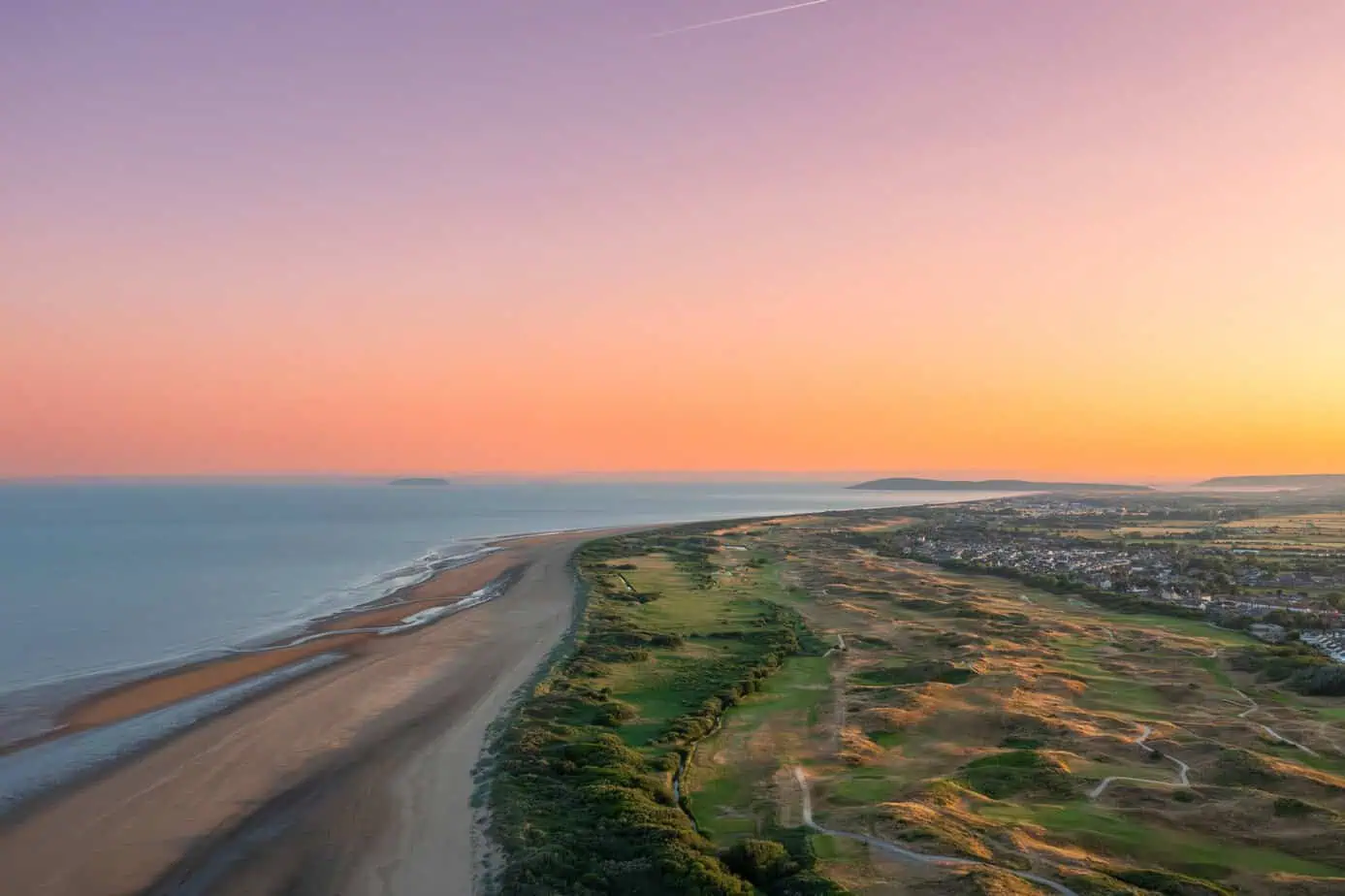This is actually a tour of a golf course. But it soon turns into an excursion into unknown territory. Helena Crouch, regional manager of the Botanical Society of Britain and Ireland, stands among man-high grasses and beams.
A short time later, she touches a few small, dried – not particularly exciting, to be honest – tufts of grass. Poa bulbosa. Listed under the English Red List species. It’s not the only rare species to be found on the Burnham & Berrow golf course on the Somerset coast. The 27-hole golf course is known above all for its sporting quality. Justin Rose won the final qualifying tournament for The Open here in July 2024.
The championship course is one of the Top 30 courses in the UK and Ireland. It winds its way through the landscape of the Berrow Dunes, which stretches for a total of six kilometres along the Somerset coast. They have long been a nature reserve, as sand dune ecosystems in this natural form on England’s coasts have largely given way to development. A glance from the tees of the golf course at the wider surroundings reveals that the sand dunes are a nature reserve: If the golf course had not been built here in 1891, residential development would have been the norm long ago.
The value of the area is now appreciated. The dune landscape plays an important role in coastal protection, is home to over 300 plant species and is an important habitat for many bird species, including the little ringed plover and little tern. In 1992, Somerset Council and English Nature adopted a management plan to revitalize the dunes after invasive species and increasing use by walkers and tourists devalued the area. Botanist Helena Crouch observes the development of the plants that now share the site with the golfers.
Greenkeeping team takes ecology into account
She is satisfied: “The greenkeeping team here does a really good job,” she explains as she points to a three-tiered cut at the edge of a fairway. “Here you can see that extra care has been taken not to damage different plant species with the cut.” The greenkeepers are particularly fond of the orchids for which the site is known. The lizard orchid can only be found here. “We certainly don’t mow them down and now know exactly where there are large populations,” explains Headgreenkeeper Richard Whyman, whose team has been focusing more on the topic of ecology, especially since the GEO certification. The grounds maintenance staff often lack precise knowledge of the species, but according to Helena Crouch, that doesn’t matter. “They don’t mow down the orchids. Many of them are not really special, but by protecting them, the greenkeepers are also helping the other plants around them.”
The greenkeepers are often involved in scrub clearance, especially in winter. In particular, the enormous stands of sea buckthorn that have spread across the dunes over decades are now considered unsuitable for coastal areas and have to be gradually removed down to five percent. Instead, it is mainly marram grass that the ecologists at Natural England are relying on for coastal protection.
Little coastal erosion
Compared to other British links courses, the Burnham & Berrows golf course is relatively little affected by coastal erosion. “No, we don’t have an issue,” summarizes Whyman and instead addresses another topic that is becoming increasingly important: Water. With only one irrigation reservoir on the site, the golf club does not yet have ample water reserves for dry periods. However, planning for a solution that promises greater resilience is already underway.
In addition to optimizing water consumption, constructing a second water reservoir is being considered. Collecting rain when it falls is the motto for the future, because the weather on the Somerset coast is also becoming increasingly unpredictable.
In some areas, vegetation is just as unpredictable as rainfall and sunshine. “It changes over time, just like certain freshwater areas on the course,” says Helena Crouch, explaining the golf course, which contains both salt and freshwater habitats. Together with other botanists and interested parties from the Somerset Rare Plants Group, she is constantly making new discoveries on the site. Like the evening primroses that opened up in front of the group at dusk during an excursion in June 2023. Bright yellow spots stood out against the multicoloured green tones of the rough. This is despite the fact that the plant is actually native to Chile. It can now be found in suitable habitats all over the world.
No, she doesn’t know much about golf, but the courses are precious as a habitat for flora and fauna, says Helena Crouch.
And to be honest, she used to view the sport somewhat sceptically. In the meantime, the situation has changed. She feels at home in the rough beyond the fairways. Golf courses, she has found, are always good for a little excursion.









